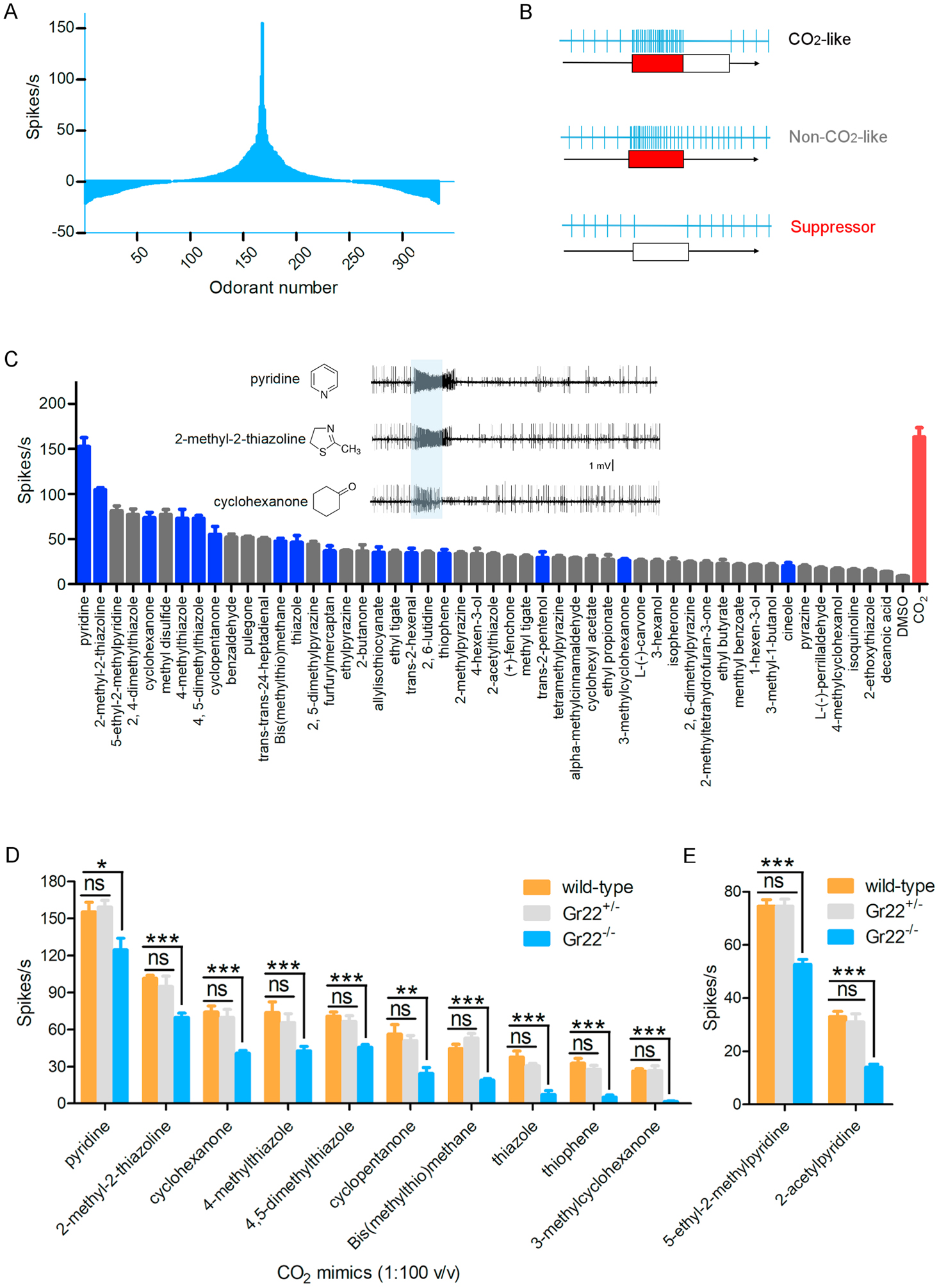Figure 5.

Neuronal responses of wild-type and Gr22−/− mosquitoes to CO2-mimic compounds. (A) Screening the potential CO2-mimic compounds (10−2 v/v or m/v in DMSO) on the cpA neuron with our laboratory chemical library (325 compounds) and identifying the most potent compounds in activating the cpA neuron. (B) Classification of response pattern of cpA neuron to different compounds compared with CO2-evoked response. (C) Compounds eliciting significant excitatory response on the cpA neuron compared to the paraffin oil control. CO2-like responses are labeled with blue color. Non-CO2-like response are shown with gray color. The response to 1% CO2 was placed on the right end of the figure with a red bar. Top three most potent CO2-mimcs which elicit the strongest responses in the neuron are placed in the left corner of the figure. Representative firing signal trace of those three compounds (10−2 v/v) is shown. (D) Lower sensitivity of the cpA neuron of Gr22 homozygous mutant mosquitoes in response to ten CO2 mimics compared to that observed in wild-type and Gr22 heterozygous mutant mosquito. (E) Lower sensitivity of the cpA neuron of Gr22−/− homozygous and Gr22+/− heterozygous mutant mosquitoes in response to two pyridine-derived compounds compared to wild-type mosquitoes. Nonparametric Mann-Whitney test is applied in the statistical analysis with P<0.05 (*), P<0.01 (**) and P<0.001 (***) as significant difference.
